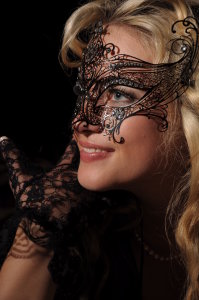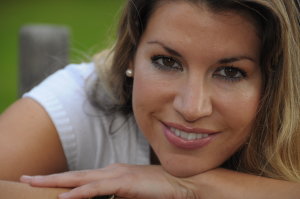Sent to you by Sparkie via Google Reader:
As we continue to wait out the aftermath of one of history's worst economic disasters, it can be prudent to continue to cut spending where possible. The digital medium does mean shooting costs are substantially lowered, but equipment and accessory costs can be still high. We've compiled a few simple home remedies for creating kit on a budget…
1. Reflectors can be a useful photography aid as the reflective surface, usually available in white, silver and gold stretched fabric, can fill in, reflect or diffuse light where necessary. Top brands can be on the pricey side so if you're on a budget grab a cheap substitute such as a silver car sunscreen, reflective tanning mat or wrap a circular sheet of cardboard in aluminum foil.
2. A snoot is a fantastic lighting accessory designed to creatively direct and control an artificial beam of light, perfect for a beauty shot for example. Try the technique before you buy with a DIY alternative. Roll a sheet of black card into a cone and place a strip of black or gaffer tape along the seam to hold it securely in place. Next lock the end of a torch with the smaller whole of the cone using tape and you're done!
 3. Small plastic diffusers are used to soften the harsh light from a flashgun. They won't cost a fortune but if you'd rather a free home made alternative then grab an empty and clean one litre plastic milk bottle. Cut off the base of the container a third of the way up. Measure the dimensions of your flash gun's head and mould the base to fit – you may need to make a few cuts and bends in the opaque plastic to get the right size. When finished tape this cap to your flashgun.
3. Small plastic diffusers are used to soften the harsh light from a flashgun. They won't cost a fortune but if you'd rather a free home made alternative then grab an empty and clean one litre plastic milk bottle. Cut off the base of the container a third of the way up. Measure the dimensions of your flash gun's head and mould the base to fit – you may need to make a few cuts and bends in the opaque plastic to get the right size. When finished tape this cap to your flashgun.
4. Capturing Mother Nature at work is invigorating but exposing your kit to the elements definitely is not. You could buy a fully waterproof, custom fitted rain cover for protection in the rain but if you haven't got the spare cash then opt for a clear plastic carrier bag (the thicker the better) so your kit is protected but the LCD, histogram and controls are still visible. Slice a small hole in the side of a carrier bag and stretch it over the lens hood, fastening with a rubber band to keep it in place. Create a second smaller hole where the eyepiece is and slide the eye-piece cover back on top to keep it in place.
5. Filters are fantastic for a plethora of reasons, but in particular the polarizer is superbly fun and effective. Photographers employ it for decreasing contrast, saturating blues and reducing harsh reflections. If a filter isn't in your budget there is a household item that can be used as an affordable (yet less effective) substitute – sunglasses! This works best with a compact set on a tripod; simply hold a removed lens from the sunglasses' frame as close to the front of your camera lens as possible. Results will vary and obviously images are unlikely to resonate the crispness that is achievable with the real thing – but it's a start.
6. Underwater photography is becoming an increasingly popular genre but the equipment costs are extremely expensive. An achievable way to get started without shelling out thousands on specifically designed aquatic cameras, housing and strobes is to hire the equipment from a dive shop in tourist destinations, providing all the necessary gear at a fraction of the cost. Still not convinced? Camera manufacturers have really raised the bar in producing durable underwater compacts at affordable prices. In particular Olympus' Mju: Tough range have a worthy reputation for shooting submerged scenes. Starting as low as £190 the Tough compacts are freeze proof, waterproof and shockproof.
7. Professional models can be expensive to hire so ask photogenic friends and family to pose for you instead. The additional benefit is their familiarity could produce more natural results. They may need more direction than their professional counterparts however, so have a stack of magazines on hand to offer posing guidance. Alternatively you could photograph an inexperienced model who is seeking head shots or a collection of images for his/her portfolio in exchange for their time. Gumtree.com and Starnow.com are great places to post ads or find willing subjects.

8. For many of us shooting models in a fancy studio backed with an encyclopaedic range of lighting equipment maybe more of a dream that a reality but that doesn't mean beautifully lit portraits aren't achievable. Natural daylight isn't only free it's very flattering, especially for portraiture and still life shooting. For the best results position your subject next to a large clean window. If the sun is too bright, drap a thin veil of white fabric (such as a cotton bed sheet or net curtain) in front of it to soften the effect.
9. Forget expensive printing services there are tonnes of websites offering free prints and bargain photo gift ideas so you have no excuse not to get creative. Popular choices like: Jessops, Snapfish and Photobox offer free print credits for every new customer and gifts that start from low price points.
10. Photoshop is one of the best editing apps on the market but it steep price tag isn't, but there are plenty of cheaper and even free alternatives out there. Adobe's Lightroom or Elements, Apple's Aperture, Corel's Paint Shop Pro Photo or Painter are all under half the cost of Photoshop. Many of these even offer a free 30-day trial, so be sure to try before you buy! And if you like free then don't forget Picasa, a free editing app perfect for quick fixes and online album creation making sharing shots with friends, family and the world a piece if cake.
Post from: Digital Photography School - Photography Tips.
10 Tips for Creating a Photography Kit on a Budget
Things you can do from here:
- Subscribe to Digital Photography School using Google Reader
- Get started using Google Reader to easily keep up with all your favorite sites

No comments:
Post a Comment